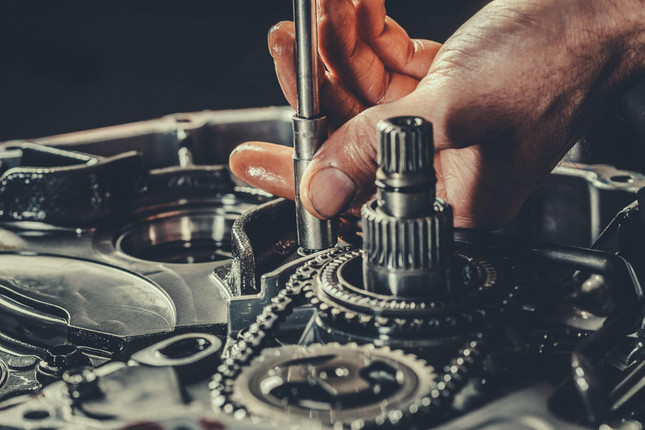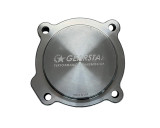Shift into Overdrive: The Technology Behind High-Performance Transmission Systems
In the realm of automotive engineering, high-performance transmission systems stand as a testament to the relentless pursuit of speed, efficiency, and driving exhilaration. Behind the scenes, intricate technologies and innovations power the seamless interaction between engine and wheels, orchestrating a symphony of precision and power. This blog embarks on a deep dive into the technology behind high-performance transmission systems, unraveling the complexities that contribute to their exceptional capabilities.
Evolution of Transmission Systems:
To understand the technology behind high-performance transmission systems, it's crucial to explore the evolutionary journey of transmissions in the automotive landscape. From the early days of manual transmissions and rudimentary gear mechanisms to the cutting-edge automatic and semi-automatic systems, advancements in transmission technology have been instrumental in shaping the performance capabilities of modern vehicles.
A.Manual Transmissions:
The earliest transmissions were entirely manual, requiring drivers to manually engage and disengage gears through a mechanical linkage. While manual transmissions provided a direct connection between the driver and the vehicle, the advent of automatic transmissions marked a paradigm shift in the pursuit of convenience and driving comfort.
B. Automatic Transmissions:
Automatic transmissions introduced a new era of driving ease by automating the gear-shifting process. Hydraulic torque converters, planetary gear sets, and sophisticated control systems became the backbone of automatic transmissions, offering a smoother and more user-friendly driving experience. As technology advanced, the performance capabilities of automatic transmissions evolved to rival their manual counterparts.
C. Semi-Automatic and Dual-Clutch Transmissions:
Semi-automatic transmissions combine elements of both manual and automatic transmissions. Drivers have the option to manually shift gears without using a clutch, providing a compromise between the control of manual transmissions and the convenience of automatics. Dual-clutch transmissions (DCTs) represent a significant leap in transmission technology, utilizing two clutches to enable lightning-fast gear changes.
Key Components of High-Performance Transmission Systems:
A. Gearsets and Ratios:
At the heart of any transmission system lies the gearset, responsible for transforming engine power into forward motion. High-performance transmission systems often feature carefully calibrated gear ratios to optimize acceleration, top speed, and fuel efficiency. Some transmissions even offer variable gear ratios, allowing for adaptive performance based on driving conditions.
B. Clutch Systems:
In manual and semi-automatic transmissions, the clutch system plays a pivotal role in engaging and disengaging gears. High-performance clutch systems are designed for quick and precise engagement, minimizing power loss during gear changes. The introduction of advanced materials and design techniques enhances the durability and responsiveness of high-performance clutches.
C. Torque Converters:
Commonly found in automatic transmissions, torque converters serve as a crucial component for transmitting power from the engine to the transmission. In high-performance applications, torque converters are often optimized for efficiency and quick response, minimizing the "slip" traditionally associated with automatic transmissions. Lock-up torque converters further improve efficiency by mechanically connecting the engine and transmission at higher speeds.
D. Electronic Control Units (ECUs):
Modern high-performance transmission systems rely heavily on electronic control units (ECUs) to optimize performance. These sophisticated computers continuously monitor various parameters such as engine speed, throttle position, and vehicle speed to make instantaneous decisions regarding gear changes and torque delivery. Advanced ECUs also enable the integration of features like launch control and adaptive shift algorithms.
Advanced Transmission Technologies:
A. Continuously Variable Transmissions (CVTs):
Continuously Variable Transmissions represent a departure from traditional gear-based systems. Instead of fixed gear ratios, CVTs use a belt and pulley system to provide a theoretically infinite number of gear ratios. This allows for seamless acceleration without discrete gear changes. In high-performance applications, CVTs are increasingly being explored for their potential to optimize power delivery across a wide range of speeds.
B. Automated Manual Transmissions:
Automated Manual Transmissions (AMTs) bridge the gap between manual and automatic transmissions. AMTs utilize automated actuators to engage and disengage the clutch and shift gears, offering the efficiency of manual transmissions without the need for a manual clutch pedal. High-performance AMTs are designed to deliver lightning-fast gear changes, providing a sportier driving experience.
C. Dual-Clutch Transmissions (DCTs):
Dual-Clutch Transmissions represent a pinnacle in transmission technology, combining the efficiency of manual transmissions with the convenience of automatics. DCTs use two separate clutches—one for odd gears, another for even gears—enabling pre-engagement of the next gear. This design allows for instantaneous and smooth gear changes, contributing to enhanced performance and driving pleasure.
Enhancing Performance and Efficiency:
A. Launch Control:
Launch control is a technology integrated into many high-performance transmission systems to optimize acceleration from a standstill. By carefully managing engine power and traction control, launch control minimizes wheel spin and maximizes acceleration, resulting in quicker and more consistent launches.
B. Adaptive Transmission Systems:
Adaptive transmission systems leverage advanced algorithms and machine learning to tailor performance to individual driving styles. These systems continuously analyze driver behavior, road conditions, and other variables to adapt shift patterns and optimize the transmission's response. This results in a personalized driving experience that balances performance and efficiency.
C. Cooling Systems:
High-performance transmission systems generate significant heat during intense driving conditions. Efficient cooling systems, often including dedicated transmission coolers, are essential to maintaining optimal performance and preventing overheating. Some systems even feature active cooling technologies that adapt based on the driving scenario.
The Role of High-Performance Transmissions in Motorsports:
The technology behind high-performance transmission systems finds its ultimate playground in motorsports. From Formula 1 to endurance racing, the demands of competitive racing drive continuous innovation in transmission technology. Seamless gear changes, lightning-fast response times, and optimal power delivery are paramount in motorsports, pushing engineers to push the boundaries of what is technically achievable.
A. Sequential Gearboxes:
In motorsports, sequential gearboxes are a common sight. These manual transmissions allow for rapid and sequential shifting without the need for a clutch pedal. Drivers can move up and down the gears with a simple push or pull of a lever, reducing the time spent shifting and enhancing the overall performance of the vehicle.
B. Paddle Shift Systems:
Paddle shift systems have become synonymous with high-performance vehicles, especially in the realm of supercars and sports cars. These systems, often paired with dual-clutch transmissions, allow drivers to manually shift gears using paddles mounted on the steering wheel. The instantaneous response of paddle shift systems contributes to a more engaging and dynamic driving experience.
Future Innovations and Trends:
As technology continues to evolve, the future of high-performance transmission systems holds exciting possibilities. Electric and hybrid propulsion systems, advanced materials, and smart technologies are expected to play key roles in shaping the next generation of high-performance transmissions.
A. Electric and Hybrid Transmissions:
The rise of electric vehicles (EVs) and hybrid technology is reshaping traditional transmission systems. Electric vehicles often feature a single-speed transmission or no transmission at all, relying on the instantaneous torque delivery of electric motors. Hybrid transmissions integrate electric and internal combustion power sources, presenting new challenges and opportunities for transmission engineers.
B. Smart and Connected Transmissions:
The integration of smart technologies and connectivity features is becoming more prevalent in modern vehicles, including high-performance models. Smart transmissions could adapt to real-time traffic conditions, learn from driver behavior, and communicate with other vehicle systems for optimal performance and efficiency.
C. Lightweight Materials and Design:
Advancements in materials science and engineering are enabling the development of lighter and more durable transmission components. Lightweight materials, such as advanced alloys and carbon composites, contribute to improved fuel efficiency, faster acceleration, and enhanced overall vehicle performance.
Conclusion:
The technology behind high-performance transmission systems is a testament to the ever-evolving landscape of automotive engineering. From the mechanical precision of gearsets to the sophisticated algorithms of electronic control units, every element plays a crucial role in delivering an unparalleled driving experience. As we look towards the future, the convergence of electric propulsion, advanced materials, and smart technologies promises to usher in a new era of high-performance transmissions. Whether on the racetrack or the open road, these technological marvels continue to define the boundaries of what is possible, providing enthusiasts with the thrill of precision, power, and performance.




